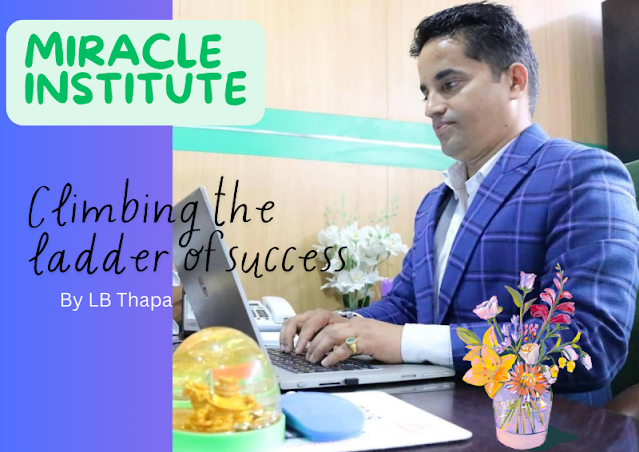GEORGE JOHN, POKHARA AND PN CAMPUS
The present article is based on my talks with Sir George
John on different occasions.
By LB THAPA
George John needs no introduction…he has become a
household name in Pokhara. He is so much venerable, adored and eulogized that
many contemporaries of his time might envy him. But George John is unbelievably
a very simple and unassuming person of wonderful character. In a true sense, he
is a jaded pearl of Pokhara.
George John had his graduation from Bible College,
India. Out of curiosity, he had visited Nepal and stayed in Kathmandu for some
time. His real intention was to visit Kathmandu as a tourist and return to
India. However, later he changed his mind and decided to stay in Nepal. In the
mean time, he joined Shanker Dev campus to study MA English literature.
When he first arrived in Nepal in 1950, he was a 16-year-old
boy. He spent nearly four years in teaching and studying in Kathmandu. After
then he shifted to Pokhara. He fell in love with Pokhara at first sight. He
found Pokhara amazing, as it was rich in natural beauty beyond imagination.
Meanwhile, George John was asked to lead a group of intellectuals to establish
a campus in Pokhara. He gladly accepted the invitation.
George John recalls his memory about Pokhara airport
and says that then it appeared less an airport but more a playground. The
runway was not blacktopped. A bumpy landing would shake the passengers hard. It
was a common scene when the airport workers would chase away domestic animals
from the runway. There were no concrete houses until then except a few thatched
huts found sporadically.
In 1960, the government decided to provide some
land for the construction of the campus. Teachers and students worked together
to build the first ever campus in Pokhara. The teachers asked the students to
cut as many bamboos as they could, because in those days bamboos were available
in abundance. When enough bamboos had been collected, the next job was to
collect rocks for erecting four walls.
It was yet a tedious job, but enthusiastic students
and some local volunteers made it possible. Now bamboos had been collected and rocks
were piled up, the next job was those of professionals. But the problem was
that the college construction committee had very small budget. Finally, it was
decided to organize a cultural show to raise the fund.
The fund came handy as the construction work swung
aggressively and the thatched roofed college building in ‘L’ shape stood firm
in 1960. And soon the classes began to take place. Dorothy Mierow, a Peace
Corps volunteer, came from Kathmandu to teach Geography. She started her class
with six students.
The college building was not fenced until then so
that stray animals like buffalos, mules, donkeys, goats, and cows would graze
freely around the college buildings. Anyway, the classes began. The school was running
in the daytime and the campus in the morning or late evening.
When everything seemed all right, the Mother Nature
turned furious. In a spring storm, the classroom building had been collapsed.
Books in the library turned wet and many books were permanently damaged. Most
of the roofs had been blown away. George John was advised to abandon his room
quickly as it was about to collapse.
To avoid such damage in days to come, George John
and his team replaced the whole roof with corrugated tin. The entire building
then stood unshaken…next spring’s violent storm passed without damaging the
college buildings. But, the tin roof made so much noise that all the teachers
had to stop teaching until rain stopped. The noise would turn unbearable during
the time of hailstone falling. George John and Dorothy Mierow opted to slate
roof to avoid excessive noise problem.
The college was running but it was still grappling
with financial crunches. There were not enough students in the college. On top,
tuition fee was also low. As a result, the college was unable to function
smoothly. To get rid of this problem, the college decided to organize a fair.
To attract more people a cultural programme was organized,
where local belles performed dance on popular songs. Such programmes became
very popular among the local people. Throngs of people would flock at the fair
to watch various programmes. Dorothy Mierow used a pressure lamp projector and
showed color slides.
It further pulled a huge crowd as many people of
that time had never seen anything like that before. Later the college bought an
Indian generator to produce electricity. The generator made so much sound that
ground beneath the generator vibrated as if tremors of a violent earthquake.
The sound of the generator could only be subdued by increasing the sound of the
loudspeakers.
The sound of the generator and the loudspeakers
were enough to pull all Pokhareli from their houses. However, nobody made a
complaint against the ear piercing sound…they liked it instead.
George John was leading the campus from the front
as he was the principal of the college. During this time, he was sent to
Baglung at Mahendra campus in the capacity of campus chief. After one year, he
returned to Pokhara and continued his job in Prithvi Narayan campus (PN
campus).
George John got married to Eliyama. The couple
lived together and worked hard to rebuild the infrastructure necessary to run
the college smoothly. In the beginning life was not that easy for Eliyama. She was
born and raised in Kerala. Eliyama was not used to such hardship of rural
Nepal.
However, she was living with her husband in a house
which was poorly built. But she never made a fuss of hardship she endured. At
one time even a leopard entered the house, but the next moment he leapt out of
the window and Eliyama was left unscathed.
Eliyama was teaching in Pokhara, but at the same
time she continued her education and passed M.Sc from Tribhuvan University. She
taught at PN campus until 2000. John took retirement from active teaching in 1996.
Later, in the honor of George John ‘George John Education Foundation’ was
established. Its main purpose was to provide logistic help to bright students
and to honor those personalities who have made outstanding contribution in the
field of education.
Sir George John is the most respected name in
Pokhara. He is larger than life, and his contribution to enrich education in
Pokhara is unsurpassable indeed. Sir George John is the proud name of Pokhara.
We Pokhareli are proud of him. His reputation as a man of letters and his
dedication to education are as tall as Mt. Fishtail. No other man can stand
equal to Sir George John. He is truly a jaded Perl of Pokhara.
Thank you very much for reading this article.
I hope you liked this article. I will be glad if you take little time and make
a comment about this article. Your comment is highly appreciated.
LEGAL WARNING
All rights reserved. No
articles and photos published in this blog can be reproduced without the prior
written permission of the author. Legal action will be taken immediately if any
articles or photos are reproduced without the author’s knowledge. However,
articles or photos can only be reproduced by duly mentioning the author’s name
and the blog's name (read2bhappy.blogspot.com). The author must be informed by
sending an email. All articles and the photos published in this blog are the
copyright property of LB THAPA











.png)
Comments
Post a Comment